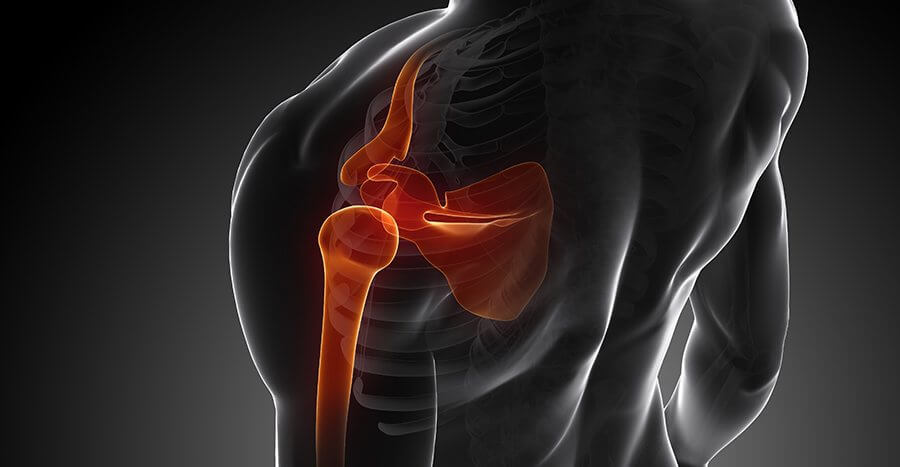
Normal Anatomy of the Shoulder Joint
How does the Shoulder joint work?
Find out more in this web based movie.
Shoulder Arthroscopy
Shoulder arthroscopy is a surgical procedure in which an arthroscope is inserted into the shoulder joint. The benefits of arthroscopy are smaller incisions, faster healing, a more rapid recovery, and less scarring. Arthroscopic surgical procedures are often performed on an outpatient basis and the patient is able to return home on the same day.
For more information about Shoulder Arthroscopy, click on below tabs.
Frozen Shoulder
Frozen shoulder is a condition of painful shoulder with limited movement because of pain and inflammation. It is also referred as adhesive capsulitis and may progress to the state where an individual may feel very hard to move the shoulder.
For more information about Frozen Shoulder, click on below tabs.
Shoulder Joint Replacement
Shoulder joint replacements are usually done to relieve pain and when all non-operative treatments to relieve pain have failed.
For more information about Shoulder Joint Replacement, click on below tabs.
Shoulder Pain
The shoulder is made up of several layers, including the following:
Bones – the collarbone (clavicle), the shoulder blade (scapula) and the upper arm bone (humerus)
Joints – facilitate movement.
For more information about Shoulder Pain, click on below tab.
Shoulder Instability
Shoulder instability is related to defects, weakness or injury to the soft tissue capsule that surrounds the ball and socket joint of the shoulder. Instability indicates that the shoulder joint has become “loose” and excessive movement of the humeral head occurs within the joint and alters the mechanics and normal motion of the arm. Instability may result in recurrent dislocations or subluxations, as well as lead to the acceleration of the degenerative change in the joint.
For more information about Shoulder Instability, click on below tab.
Rotator Cuff Injury
The “rotator” cuff is a collective term for a group of four muscles and their associated tendons that join together within the shoulder. These four muscles originate at different points on the shoulder blade and insert into the upper arm bone (humerus) as a common tendon. A healthy rotator cuff gives the shoulder strength, flexibility and stability. Injury to the rotator cuff may result from aging, trauma, repetitive stress or overexertion of a weakened shoulder muscle. Injury to the rotator cuff can result in continuous pain, pain at night, tenderness and the loss of shoulder mobility.
For more information about Rotator Cuff Injury, click on below tab.
Shoulder Impingement
Impingement syndrome refers to the mechanical compression and/or wear of the rotator cuff tendons as they pass under the bony structure of the shoulder. This compression can cause inflammation of the subacrominal bursa and other structures of the joint, resulting in a persistent increase in pain, tenderness and loss of motion in the affected shoulder. Normally the rotator cuff glides smoothly and without irritation between the undersurface of the acromion and the humeral head. A healthy rotator cuff is essential to shoulder strength, flexibility and control. One potential outcome of impingement syndrome is a rotator cuff tear.
For more information about Shoulder Impingement, click on below tab.
Shoulder Arthroplasty
The shoulder is one of the largest and most complex joints in the human body. The humerus (upper arm bone) and the scapula (shoulder blade) join to form the shoulder joint. It is also referred to as a ball and socket joint and is surrounded by muscles, ligaments, and tendons.
For more information about Shoulder Arthroplasty, click on below tab.
Reverse Arthroplasty
Reverse Shoulder Replacement is an alternative surgery for patients who have torn their rotator cuffs and have developed severe arthritis or who have had a previous total shoulder replacement that has failed to relieve their pain. Rotator cuff is the group of four tendons that join the head of the humerus (arm bone) to the deeper muscles and provides stability and mobility to the shoulder joint.
For more information about Reverse Arthroplasty, click on below tab.
Click on the topics below to find out more from the Orthopedic connection website of American Academy of Orthopaedic Surgeons.
- The Shoulder
- Arthritis of the Shoulder
- Arthroscopic Shoulder Surgery: Thermal Capsulorrhaphy
- Broken Collarbone
- Dislocated Shoulder
- Fracture of the shoulder blade (scapula)
- Frozen Shoulder
- Rotator Cuff Tears
- Separated Shoulder
- Shoulder Impingement (Bursitis, Tendinitis)
- Shoulder Joint Replacement
- Shoulder Joint Tear (Glenoid Labrum Tear)
- Thoracic outlet syndrome
- Shoulder Arthroscopy
